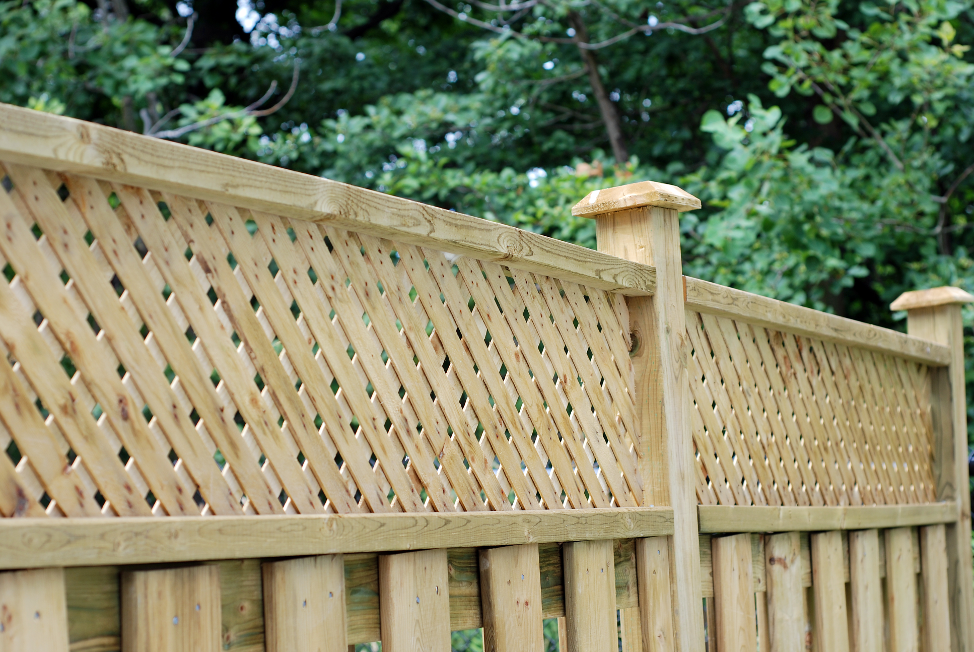All Categories
Featured

Your fence is an important part of your building, using protection, personal privacy, and curb charm. There are several methods you can carry out to safeguard your fencing and prolong its life.
- Choose the Right Material. The very first step in shielding your fence from weather-related damage is to select the ideal product for your environment. Some materials are a lot more immune to the elements than others.
Wooden Fencings: While standard wooden fences supply a natural, eye-catching look, they are particularly prone to water parasite, damages, and rot infestation. If you pick timber, select pressure-treated lumber or wood kinds that are more resistant to dampness, such as cedar or redwood. Vinyl Fences: Vinyl is a low-maintenance option that resists fading, fracturing, and warping. It's likewise unsusceptible to rot and bugs, making it suitable for locations with high humidity or exposure to rainfall. Steel Fencings: Aluminum and functioned iron fences are sturdy and resistant to weathering. They can rust if subjected to moisture for extensive periods. Go with a galvanized or powder-coated metal fencing to decrease the threat of corrosion. Composite Fences: These are made from a mix of timber fibers and plastic, offering the finest of both worlds-- sturdiness and a natural look. Compound fences are immune to wetness, fading, and rotting, making them fantastic for climates with regular rain or snow. 2. Apply Safety Coatings. Despite the material, using a safety finishing can help secure your fencing from climate damage.

Wood Fences: A good-quality stain or sealant can assist safeguard your timber fence from dampness, UV rays, and bugs. These finishes create an obstacle that avoids water from leaking right into the wood and triggering rot. You should apply a fresh layer of sealer every couple or tarnish of years, depending on your climate and the degree of exposure to rain and sunlight. Plastic Fencings: Although plastic fencings are usually immune to weathering, they can still struggle with staining due to the sun's UV rays. You can utilize specific plastic cleansers or UV protectants to maintain the color and appearance of your fence. Steel Fencings: For steel fences, think about applying a rust-resistant guide and a coat of paint developed for exterior usage. Powder finish is one more superb option for metal fences, as it creates a sturdy, weather-resistant surface that stands up to corrosion and deterioration. 3. Regular Cleansing and Upkeep. Maintaining your fence routinely is necessary to avoiding damages from the aspects. Dust, leaves, and various other particles can develop on your fence, which can trigger discoloration, mold and mildew, and mildew gradually.
Wooden Fencings: Tidy your wood fencing every 6 months with a light cleaning agent option or a pressure washer (on a reduced setting) to eliminate dirt and gunk. Maintain an eye out for very early indicators of rot, especially at the base of the fence messages where dampness tends to build up. Vinyl Fences: Plastic fencings are very easy to clean with soap and water. Utilize a combination of vinegar and water to carefully scrub the influenced areas if you observe mold and mildew or mildew. Avoid extreme chemicals that might damage the surface. Steel Fencings: Regularly clean steel fences with a soft cloth or sponge to eliminate rust-causing particles. For wrought iron fences, take into consideration applying a rust-inhibiting product to prevent deterioration. 4. Proper Setup and Positioning. Appropriate setup of your fence can go a lengthy means in safeguarding it from weather-related damages. Guarantee that your fence is firmly anchored which messages are set deep enough right into the ground to avoid changing throughout heavy winds or storms. If your fence undergoes heavy winds, setting up supporting at key factors can provide additional support.
Furthermore, take into consideration the positioning of your fence. Plant bushes or trees purposefully around your fence to give some natural protection from extreme winds, intense sunshine, or motoring rainfall if feasible. Be mindful not to plant as well close to the fence, as origins can damage or shift messages over time.
- Address Storm Damage Quickly. Storms, specifically those with high winds or hail, can trigger prompt damage to your fencing. After a tornado, inspect your fence for broken areas, leaning posts, or fallen particles. Addressing damages rapidly can stop further concerns down the line. If you discover small damage, such as little fractures or loosened panels, repair them as soon as possible to avoid water from seeping in and creating much more comprehensive damages.
- Winterize Your Fence. Cold temperatures and ice can be especially harming to wooden fences. When water gets in the timber and ices up, it can trigger the product to crack or split. To prevent this, make certain that the base of your fencing blog posts rises and not being in pooled water. In regions that experience freezing temperatures, you might want to mount a wetness barrier around the base of the posts to minimize the danger of water damages.
Verdict. Weather-related damages is an unavoidable part of possessing a fencing, but with the right precautions and routine maintenance, you can considerably prolong the life of your fence. Choose sturdy materials suited for your climate, apply safety finishings, tidy consistently, and make sure correct installation. With these actions, you can shield your fence from the components and keep its appearance and functionality for several years to find.
Latest Posts
Reputable Industrial Roof Covering Services by Weathercraft
Published May 25, 25
1 min read
Uncover the Best Auto Repair Coupons in Montclare, Chicago
Published May 23, 25
1 min read
How to Know When Your Car Needs Skilled Car Repair at Montclare Auto Repair
Published May 23, 25
1 min read